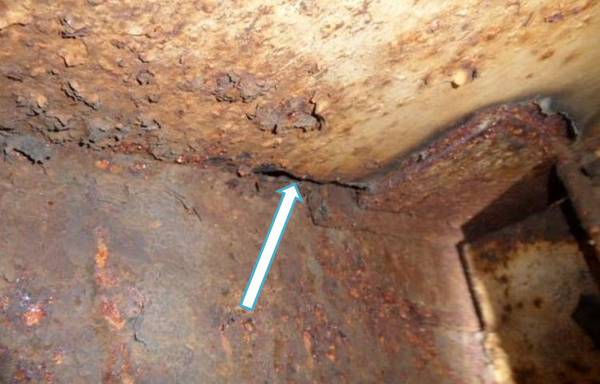
There’s a master on the run right now.
It was 4am, about 10 years ago. Two crewmembers died, 15 others were hospitalized. The master didn’t receive prior notification of the cargo fumigation that occurred, yet it is the master who is being held accountable.
Captain Kuba Szymanski, Secretary General of InterManager, recounts the story as he explains why he is pleased about some of the outcomes of MSC 100 but feels more work still needs to be done.
“Very often people onboard a ship do not have enough information. The shippers, those who are providing the cargo, have sometimes been slow when it comes to providing documentation, so our crews are loading cargoes nowadays not necessarily knowing what they are carrying.”
Szymanski is very pleased that the IMO has realized that the shipper is actually a stakeholder in the process, and it is their responsibility to provide accurate cargo information. “This hopefully gives an instrument now for our people on board to say: ‘I need more safety data on this particular cargo.’ It reaffirms the master’s authority to make the final decision.”
In the case of the Nefryt and its cargo of shea nuts, leaks in the ventilation trunk of the air conditioning system running inside the starboard side ventilation casing of the cargo hold supplied fumigant-contaminated air to the crew’s living quarters.
“InterManager statistics show that 6% of all enclosed space fatalities onboard ships happen in the accommodation block. Why? People are dying in a place which is supposed to be a safety citadel for them as far as enclosed space is concerned. What really needs to be asked is: How can we still be designing ships where, in 6% of all cases, there can be a harmful atmosphere in living quarters?”
The technical condition of the air conditioning ventilation trunk on Nefryt was not checked during the previous flag state inspection, nor was the ventilation trunk inspection for gas tightness by the shipowner.
That is still potentially a design problem, says Szymanski. “Accident investigators stop at blaming people. If we were to investigate accidents with a real willingness to get to the bottom of the problem, the root cause, instead of saying that maintenance is poor, we might realize that maintenance was poor because it’s not accessible. It’s not able to be maintained properly.
“The 6% shown in our statistics definitely blames industry for not taking care of its people by not by not creating safe environment.”
This accident was not reported to IMO for 10 years, he says. “Meantime similar accidents have happened on other vessels. Could the report, if made available to the international audience, prevented other deaths?”
An account of the incident as described in the Polish government’s investigation report (State Marine Accident Investigation Commission):
On 24 September 2015 at 02:00 am, at the port of Abidjan in Ivory Coast, the loading and trimming of cargo of shea nuts onto Nefryt was completed. During the closing of cargo hold covers and clearing of cranes, 2 persons arrived on board to perform the cargo fumigation.
When they distributed the fumigating agent, the crew completed the closing of hold covers and preparing the ship to depart to sea.
Before noon, Nefryt with a pilot on board departed to sea to the port of Buchanan in Liberia to take the load of logs.
On the following day, starting from midnight, the crew began to experience stomach pains and vomiting, with accompanying feeling of cold and generalized weakness. From early morning hours, the condition of individual crew members began to deteriorate and symptoms started to worsen.
The officer of the watch, to whom subsequent crew members reported their health problems, informed the chief officer about the situation among the crew. Before 5.00 am, the chief officer notified the master. The master, who also exhibited symptoms of poisoning, came to the bridge. After consulting other officers, he notified the shipowner, and then a physician from the TMAS in Gdynia, about the situation. The master informed both the shipowner and the physician that health problems of the crew could have been caused by food poisoning.
As a result of incoming reports about deteriorating condition of the crew, suggestion made by the TMAS physician to go to the nearest port and recommendations of the shipowner, the master changed the course and headed to the port of San Pedro in Ivory Coast.
After approximately 4 hours, the ship arrived at the roadstead in San Pedro and at 3:00 pm came to anchor. Two hours later, a local physician, who had arrived on a motorboat from the port on board a ship, examined all members of the crew. After the examination, the physician wrote a list of medicines to be purchased on shore. When the medicines had arrived on board, they were distributed among the crew according to individual recommendations of the physician.
At night from 25 to 26 September 2016, the condition of the crew deteriorated further. At around 3:00 am, the chief officer called the officer of the watch on the bridge and asked him to replace him on watch for some time, starting from 4:00 am, since he felt very bad. At 4:15 am, the third officer also informed the officer of the watch that she felt very bad and experienced blurred vision, and that she had not been able to contact the chief officer by phone.
An ordinary seaman sent from the bridge to the chief officer’s cabin found that the chief officer showed no signs of life. The master was alerted and the resuscitation was started.
The master contacted the harbor master office of San Pedro by the radio (VHF) and asked for emergency medical assistance.
During the resuscitation of the chief officer, the condition of the third officer deteriorated. She had breathing problems. She was given oxygen and then the resuscitation began.
The resuscitation of the chief officer lasted for over 2 hours. At around 7:00 am, the rescuers discontinued the resuscitation. The master ordered to prepare the engine for maneuvers to enter the port.
At 7:50 am, a physician with the ship’s agent arrived on board. The physician checked the pulse of the third officer and recommended to continue resuscitation. After 40 minutes, the physician declared the officer dead.
The anchor was weighted several minutes earlier. At 10:00 am, the ship moored in San Pedro.
After mooring, at 11:00 am a consent was obtained for the crew to leave the ship. 15 crew members, in several groups, were transported to the medical clinic in San Pedro for examination. The examinations were completed on the next day, at around 6:00 am.
The examinations failed to identify the cause of poisoning. The physicians ordered additional tests at the capital Abidjan. The shipowner decided to transport the Nefryt crew to Abidjan by plane and to place them at the international polyclinic.
At the hospital in Abidjan, all members of the Nefryt crew were subject to extended examination as compared to the tests performed at the clinic in San Pedro. After the physicians had diagnosed the poisoning with phosphine gas, appropriate treatment was initiated.
Between 5 and 21 October 2015, the 15 members of the crew were successively, as their health improved, released from hospital and they all returned to Poland.
Phosphine
Phosphine, PH3, is dangerous for humans, since even a small quantity of gas may cause headache, nausea, vomiting, drowsiness, coughing and chest tightness. In the case of prolonged contact with PH3 in higher concentrations, the following symptoms may occur: convulsions, loss of consciousness, cardiac arrhythmia and liver or kidney damage. In general, the longer exposure to phosphine, the more serious the resulting health problems.



